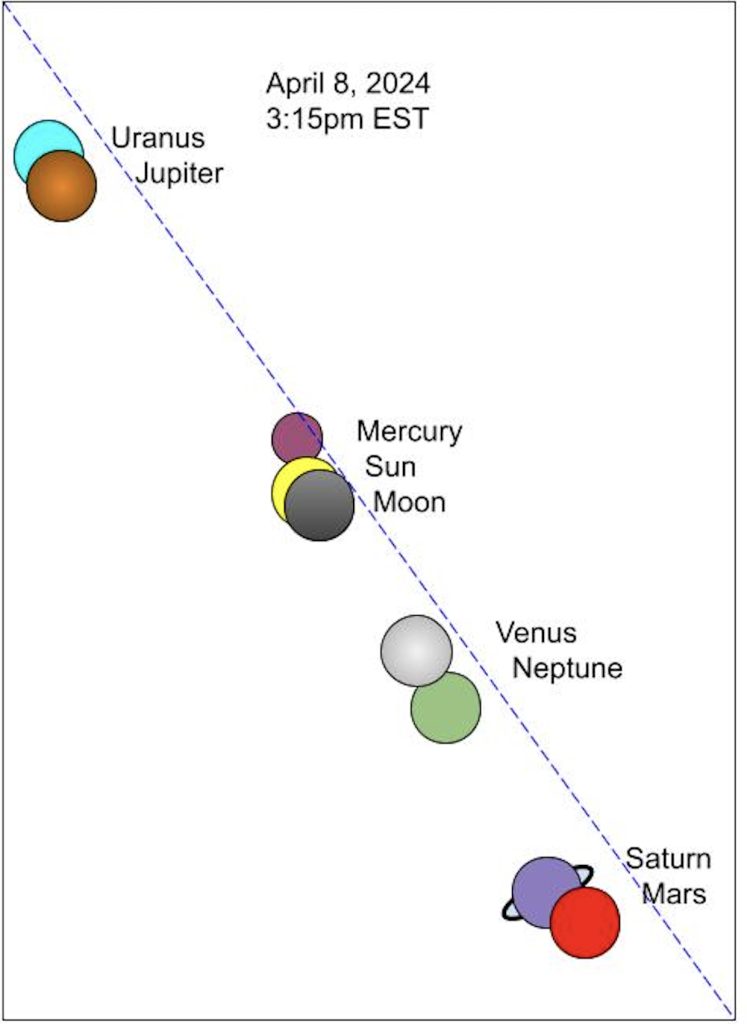
There can hardly be a person in New Hampshire who was unaware of the total solar eclipse that occurred on the afternoon of Monday, April 8, 2024! The sky dimmed, the temperature dropped, birds flew to take shelter, and millions of humans donned goofy glasses to stare skyward.

Most folks today know that an eclipse is no evil portent but merely the shadow of the moon passing over a portion of Earth’s surface. The 2,000-mile diameter moon’s “umbra,” or deepest shadow path, was 115 miles wide and traveled across the ground at about 60 miles an hour. The ancient Greeks used eclipse observations to fairly accurately judge the relative sizes of the earth and moon. (And, of course, they didn’t think the world was flat; that idea came later.)
Astronomers have been able to predict the track of total eclipses since the 17th century, and we know the next one won’t cast a shadow on our country for another 44 years. But this time, the shadow passed so close by our homes we all got a pretty good look at it. Millions of people from miles away jumped into cars and flocked to New Hampshire’s North Country to get a front row seat for the totality. Highways were jammed from Sunday to Tuesday, prolonging the homeward trip for some of my neighbors until 5:30 AM the next day!
But profound shade and traffic were not all that happened. Astronomically, the sun, the moon, and all seven other planets were in alignment, that is, lined up in the same direction. (See the picture below.) This caused an unusually large gravitational pull on the earth in one direction, maximizing tidal forces not just on the oceans but on the solid earth too. Perhaps this is the reason that on Thursday morning, a rare east coast earthquake centered in New Jersey rumbled the entire northeast with a 4.8 magnitude shake that set dishes rattling in cupboards from DC to Boston.
The totality also caused an event for the New England electric grid. In a previous issue of The Beacon, I wrote about “duck days,” in which solar power on the grid is sufficient to drive the wholesale price of electricity to zero, or even negative. The eclipse occurred in the middle of such a duck day, essentially switching off the free juice and then turning it back on within a two- hour period.
The grid’s Independent System Operator for New England (ISO-NE) was well prepared for this. They carefully manipulated the price they pay to conventional electricity generators during the afternoon, going from zero before the eclipse started, to about double the average daily price during totality, and then dropping their offer back down to near zero as the eclipse ended.
This had the effect of enticing idling fuel-powered “peaker plant” generators to standby until the price got high enough they could turn a profit. As that price point was reached, those generators fired up for an hour or so. Then they shut down and went back to standby as the price sank to the point they were no longer making money.